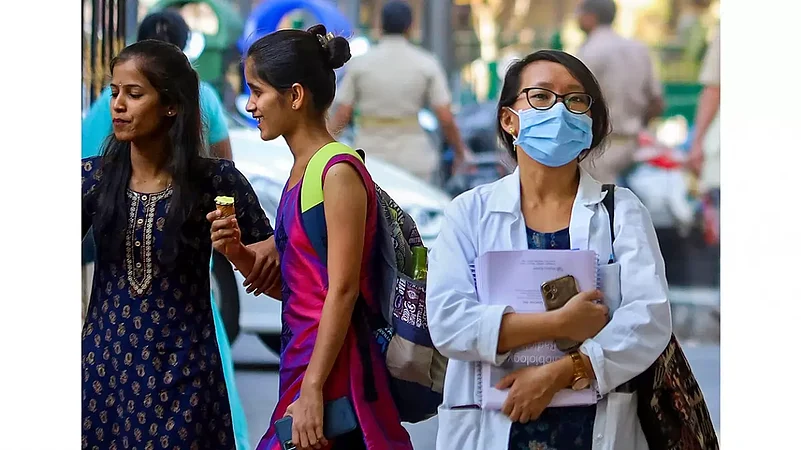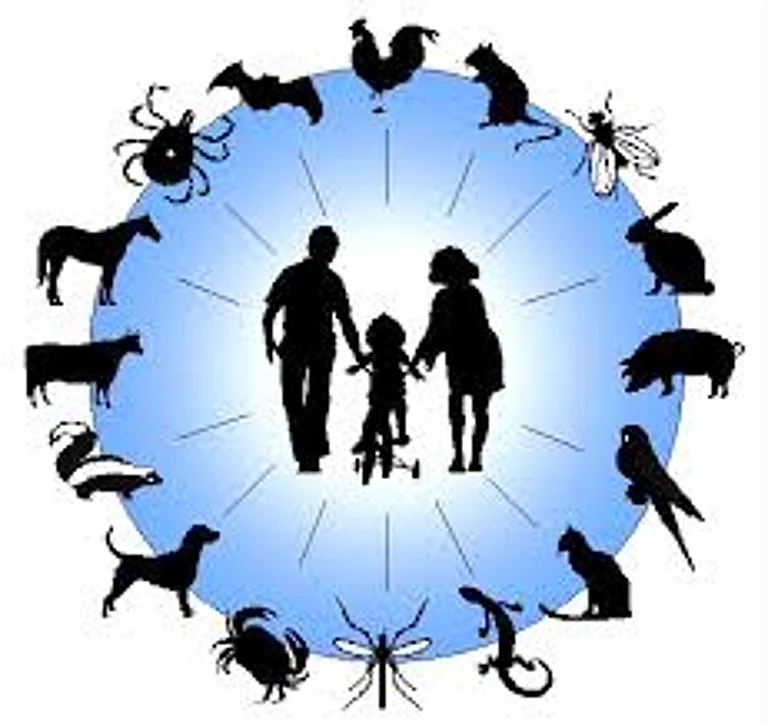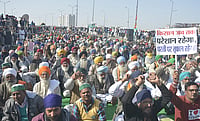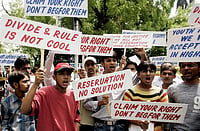A 58-year-old woman died from flu-like symptoms in Gujarat's Vadodara, said officials on Tuesday.
PTI reported that it was not officially confirmed if she was infected with the H3N2 influenza virus as her test results were awaited at the time of death.
India is currently in the H3N2 influenza virus season and the Union government has taken note of the situation. If confirmed to have an H3N2 infection, the Gujarat woman would be the seventh fatality in the country so far in the current viral season, according to India Today.
Here we explain what is H3N2 influenza, what are the symptoms, and what's the status in India.
What is H3N2 influenza?
First things first, the H3N2 influenza is not a new virus and there are tested vaccines and treatment options available. So there is no reason to panic.
The influenza virus causes the flu sickness, which leads to respiratory issues. There are four types of influenza viruses named A, B, C, and D. Influenza viruses A, B, and C can infect humans. The H3N2 is a sub-type of Influenza A virus.
Healthline notes, "Influenza A viruses are further divided into different subtypes based on two proteins found on the surface of the virus — hemagglutinin (HA) and neuraminidase (NA)."
About the reasoning behind its name, Healthline says, "There are 18 different subtypes of HA, which are numbered H1 through H18. Similarly, there are 11 different subtypes of NA, numbered N1 through N11...Influenza A viruses are classified according to both their HA and NA subtypes. Some influenza A sub-types that you may be familiar with include H1N1 (sometimes known as swine flu) and H3N2."
While anyone can get infected, older adults and younger children are at a higher risk from H3N2.
H3N2 can spread from person to person. It's recommended that if you have symptoms or are known to be infected, you should cover your mouth and nose while coughing or sneezing.
"If you’re sick with the flu, you can prevent transmitting it to others by staying home until 24 hours after your fever has gone down and being sure to cover your mouth when you cough or sneeze," notes Healthline.
The currently prevalent H3N2 infections are part of the annual viral cycles, said Union Health Ministry in a statement on March 10.
"India every year witnesses two peaks of seasonal influenza: one from Jan to March and other in post monsoon season. The cases arising from seasonal influenza are expected to decline from March end," said the Health Ministry.
Symptoms and diagnosis of H3N2
Symptoms of H3N2 can be similar to other flu types and sub-types and other respiratory conditions. A test is therefore a better way to diagnose it.
Healthline notes the following symptoms of H3N2:
- Cough
- Rrunny or congested nose
- Sore throat
- Headache
- Body aches and pains
- Fever or/and chills
- Fatigue
- Diarrhea
- Vomiting
It's not necessary that you would experience all of the symptoms at once.
H3N2 can be checked with lab tests that can deliver results the same test. There are multiple types of tests that can look for the virus itself or anti-bodies produced against it by the immune system. The test is usually carried out from a swab sample taken from nose or throat. Lal Path Labs website says a PCR test is also available.
The treatment of H3N2 and other flu-like infections is usually based on symptoms. In complicated cases, specialised anti-viral drugs are used.
Vaccine and Treatment for H3N2
There is a vaccine for seasonal flu that also covers H3N2. Healthline notes that it reduces infections by 40-60 per cent.
However, new strains of flu viruses keep coming every season and vaccines have to be updated. Moreover, vaccine-derived protections wanes over time so annual doses are recommended, according to the World Health Organization (WHO).
The WHO says, "Among healthy adults, influenza vaccine provides protection, even when circulating viruses do not exactly match the vaccine viruses. However, among the elderly, influenza vaccination may be less effective in preventing illness but reduces severity of disease and incidence of complications and deaths. Vaccination is especially important for people at high risk of influenza complications, and for people who live with or care for the people at high risk."
The treatment for H3N2 is mainly based on one's symptoms. However, in comeplicated cases, specialised anti-viral drugs are used.
"In some cases, doctors may prescribe an antiviral medication, such as oseltamivir (Tamiflu). When started within 48 hours after developing flu symptoms, antiviral medication can help to shorten the duration of illness and prevent complications from developing," says Healthline, adding that other drugs used are zanamivir (Relenza) and peramivir (Rapivab).
Besides anti-viral medicines, rest and plenty of fluids are also recommended.
The H3N2 outbreak in India
The Union Health Ministry in a statement on March 10 said it's observing the H3N2 situation in India closely.
The Integrated Disease Surveillance Programme (IDSP) network is being used to monitor the H3N2 outbreak in real time, said the Union Health Ministry.
It said that younger children and elderly with comorbidities are the most vulnerable to seasonal influenza.
The currently prevalent H3N2 infections are part of the annual viral cycles, said the statement.
"India every year witnesses two peaks of seasonal influenza: one from Jan to March and other in post monsoon season. The cases arising from seasonal influenza are expected to decline from March end," said the statement.
The primary drug to treat H3N2, oseltamivir, is available for free at government healthcare facilities, said the statement.
It said, "Oseltamivir is the drug recommended by WHO. The drug is made available through the Public Health System free of cost. Government has allowed sale of Oseltamivir under Schedule H1 of Drug and Cosmetic Act in February 2017 for wider accessibility and availability. Adequate logistics is available with the States. However, in case of any emergencies the Govt. of India has been providing the support to the States to tide over the crisis."
Publishing the data, the Union Health Ministry said that 1,245 cases were reported in January, 1,307 in February and 486 cases in March (till 9th March).
The statement said the H3N2 cases will decline by the end of March as part of the annual flu season timeline.
Healthline noted that the poor flu vaccination rate in India and high air pollution that worsens respiratory issues are also factors in the H3N2 spread.

























